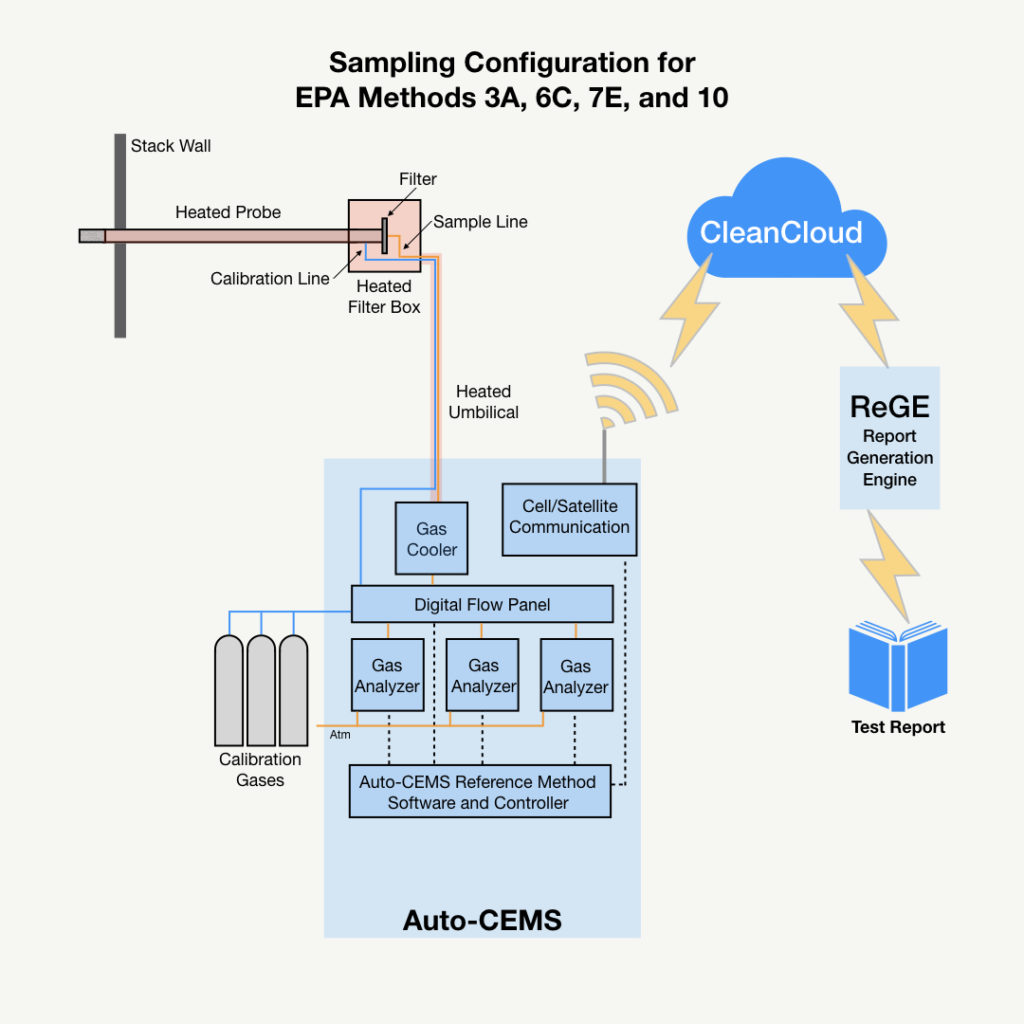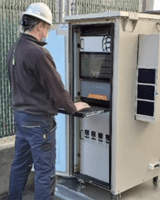Ethylene Oxide (EtO)
EtO facilities are responding to new environmental regulations and public scrutiny by measuring EtO concentrations in flue gas and process streams. The best EtO measurement technology will vary based on the specific characteristics of each gas stream. CleanAir relies on broadband cavity ring down spectroscopy (CRDS) as part of its MET-44 line of products to measure concentrations of EtO at ultra-low levels. Learn more.
Mercury
The MET-80 is the only industry-proven, turn-key Sorbent Trap Mercury Monitoring System (STMMS) that is designed and manufactured specifically for long-term mercury monitoring using sorbent trap sampling. CleanAir’s years of experience in stack sampling have been incorporated into a practical and expeditious design – making it different from other industry STMS. This simple sorbent trap system minimizes the time and specialized skills required to maintain a continuous mercury monitor. Learn more.

USEPA 40 CFR 60/75 Applications
The requirements to meet the standards in US EPA 40 CFR 60 and 75 will vary. Every CleanAir CEMS is customized with a bank of analyzers according to the specific needs of the application.
| Compound | Analyzer Type |
| Nitrogen Oxides (NOx) | Chemiluminescence |
| Sulfur Dioxide (SO2) | Pulsed Fluorescence |
| Total Hydrocarbons (THC) | Flame Ionization Detection (FID) |
| Carbon Monoxide (CO) and Carbon Dioxide (CO2) | Non dispersive Infrared (NDIR) |
| Oxygen (O2) | Paramagnetic |
| Ammonia (NH3), Hydrochloric acid (HCl), and more | FTIR |
Custom CEMS Rental
Any of CleanAir’s CEMS can include:
Computer-controlled flow panels to direct calibration and sample gas flow
Gas conditioning system for moisture removal
Data Acquisition and Handling System (DAHS)
All calibration gases required for testing
Sampling probe (single- or multi-point)
Heated sample lines
A waterproof, climate controlled enclosure

Stack Testing with Auto-CEMS
Stack testing has been automated. CleanAir’s Auto-CEMS streamline EPA reference method sampling. They can operate in either Reference Method Mode (for example Method 7E for NOx or 6C for SO2) or in RATA mode. Once a system is deployed, software begins to control measurements. This removes the need for any human intervention. If issues arise, the system operator receives email and text alerts to speed up the troubleshooting process. AutoCEMS systems are shipped on pallets, weatherproof and climate controlled. They can be operated from a trailer or placed with a forklift.
Relative Accuracy Test Audits (RATAs)
When in RATA mode, the Auto-CEMS unit complies with the requirements of the relevant reference method. It also complies with the relevant EPA Performance Specification. All required bias checks and calibrations get carried out under software control. If any QA check is problematic, CleanAir will receive text/email notifications. If plant data is available during a RATA, run-by-run results are available in real-time. Otherwise, plant data can be uploaded when it becomes available.
Reference Method Testing (NOx, SO2, THC, etc.)
For emission limit compliance testing, the Auto-CEMS gets operated in Reference Method mode. All Reference Method requirements have been pre-programmed into the software for convenience. Auto-CEMS allows any user to define the length of a run

Total Reduced Sulfur
A modified version of USEPA Method 15A can be used to measure total reduced sulfur (TRS) from flare gas and fuel gas streams. The modified set up includes a tube furnace and an SO2 analyzer. Sulfur compounds are oxidized to SO2 in the furnace and continuously measured with the SO2 analyzer.




